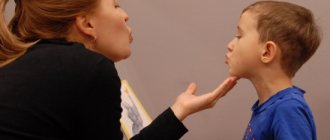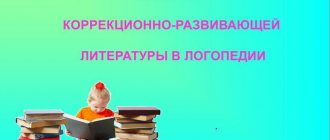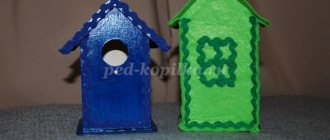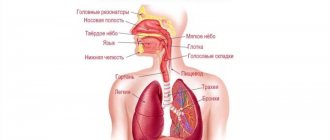Consultation via Skype or WhatsApp is available.
Neuropsychological correction is a complex of special psychotherapeutic (body-oriented) and motor and cognitive techniques that are aimed at correcting various disorders in the development of a child in order to restore his normal brain activity.
This set of measures makes it possible to stimulate the development of functions of the central and peripheral nervous system associated with movement, to develop new connections between the cortex and subcortical structures of the brain, interhemispheric connections, and promotes the emergence of holistic, plastic and coordinated movement. Allows you to develop cognitive functions and form compensatory skills, which will further help improve school performance and social adaptation.
The cognitive sphere includes the cognitive functions of the brain: thinking, memory, speech, and in school-age children - the ability to read, write, and count.
If there are cognitive impairments, the child experiences difficulties in mastering educational materials that are appropriate for his age. Signs of such violations are:
- bad memory
- inattention,
- difficulties in formulating your thoughts through oral or written speech, etc.
Cognitive neurocorrection is one of the components of the neuropsychological correction program.
What happens during a cognitive neurocorrection session
Cognitive neurocorrection is work directly with various mental functions (memory, spatial representations, speech), as well as with various types of perception (visual, auditory, tactile and somatognosis - perception of one’s own body).
In the process of cognitive neurocorrection, work is done on the fluency of speech and movements with the help of special exercises. The methods used make it possible to work on individual problematic aspects of each function: articulation, orientation in external space, the nominative (naming) function of speech (the ability to correctly name objects and phenomena), understanding of prepositions, etc. Gradually, tasks for the development of thinking processes, logical and creative tasks are included.
At this stage, the number and level of complexity of exercises for correcting various mental processes are initially selected in accordance with the initial individual plan, and in the process of work the composition of the exercises changes depending on the progress and successes achieved.
Complex neuropsychological correction allows you to develop the necessary arbitrariness of mental activity in a child and teach him to better control his behavior.
Neuropsychological diagnostics and correction are carried out by a certified psychologist with special training in clinical neuropsychology.
Developing speech with a neuropsychologist
Neuropsychology studies the consequences of injuries and damage to the central nervous system that affect the development of the human psyche. Speech and thinking disorders are caused by head trauma, cerebrovascular accident, brain tumors, neurodegenerative pathologies, epilepsy, cerebral palsy, attention deficit disorder or hyperactivity disorder in children and adolescents.
Individualized therapies are planned for people who require both neuropsychology and speech therapy. Neuropsychological intervention is necessary for a person who has suffered a brain injury, as a result of which attention, memory, speech, emotions, and behavior are impaired.
Neuropsychological mechanisms of speech development:
- Central speech motor mechanisms that control the functioning of the organs that form speech.
- Mechanisms for creating and reproducing sound forms.
All these mechanisms are interconnected and represent aspects of the psyche.
The development of communication is associated with the development of the brain. It is based on the coordinated work of many areas of the cerebral cortex, analyzer systems, and nerve fibers.
Neuropsychological intervention process
Development of therapy methods:
- Assessment and diagnosis of a person’s neuropsychological status, as well as identifying the causes of speech disorder.
- Development of individual therapy programs.
- Conducting a check on the achievement of goals.
To assess and identify the problem, doctors use different methods:
- interviews with the person and his family members;
- study of medical records;
- observation;
- use of special tests.
Individualized treatment methods are then developed.
Indications for neurocorrection
Neuropsychological correction is indicated for the following problems:
- Delayed speech development, all types of alalia, dysphasia;
- Delayed mental and psychospeech development (DSRD), developmental asynchrony;
- Damaged and deficient development (due to other diseases - cerebral palsy, hearing impairment, vision impairment, etc.);
- Dyspraxia;
- ASD – autism spectrum disorder;
- Aphasia;
- ADHD – attention deficit hyperactivity disorder;
- Dyslexia, dysgraphia, dyscalculia and other learning difficulties;
- Other violations.
For a neuropsychologist, it is not so much the official diagnosis itself that is important, but the structure of the disorder in the context of brain organization. With the same diagnosis, various factors in the central nervous system that led to developmental disorders may not have been formed, so training programs will be individual.
Before neuropsychological correction, neurodiagnostics is always carried out, after which the specialist draws up a training program. In some cases, a neuropsychologist plays the role of a coordinator, that is, he determines the structure of the disorder and gives recommendations for classes with a speech therapist or defectologist (which exercises to use for a related specialist). In our center this is possible thanks to the comprehensive work of our employees. A neuropsychologist may not conduct classes himself, but give methodological instructions to another specialist (at the client’s request).
Epilepsy will be a contraindication to some types of neurocorrection, so the specialist always asks you to bring an EEG no more than 6 months old before starting the course.
Organizational matters
For your first consultation with a neuropsychologist (if available), bring:
- conclusion from a neurologist;
- conclusions based on the results of hardware examinations (evoked potentials, EEG, Dopplerography, fMRI);
- opinions from related specialists (orthopedist, speech therapist, audiologist, ophthalmologist - depending on the type of problem);
- For schoolchildren - notebooks with written work.
Classes last 60 minutes. The classic course takes approximately three calendar months, that is, 20-25 lessons, as well as homework. In the middle of the course, many children experience the so-called “breaking of the stereotype,” that is, old (compensatory, painful) neural connections stop working, and the system becomes disorganized. This is a normal stage that parents should be informed about and prepared for. After this, it is very important to continue your studies; soon there will be an improvement and a leap in development, that is, newly formed neural connections will be included in the work of the brain, which will function at a more “adult”, highly organized level. It is very important for parents to keep a diary of observations of their child, noting all changes in his behavior and development. This will help track the dynamics during the course. The neuropsychologist will provide all recommendations and necessary materials during the consultation along with a written report on the diagnostic results.
Functional Block Theory of the Brain
All neurocorrection is based on the theory of A.R. Luria (Soviet psychologist, neuropathologist, founder of neuropsychology as a science) about three functional blocks of the brain:
- Energy block. These are the trunk and subcortical structures that are responsible for various functions in the body:
- the muscle tone required at the moment;
- sleep-wake ratio;
- motivation for life;
- regulation of emotions and assigning a “rating” to external events (food and rest are good, but aggression of fellow tribesmen, attack by a predator is bad);
- sexual behavior;
- stabilization of movements (maintaining a static and dynamic posture, smoothness and consistency of the motor act);
- regulation of the functioning of internal organs, etc.
- Block for receiving, processing and storing information. This includes all analyzers (vision, hearing, kinesthetics, proprioception, etc.) and their representations in the cerebral cortex, as well as attention and memory, without which information processing is impossible.
- Block of programming, regulation and control of activities. These are the frontal lobes. They mature later than others, at 20-25 years. It is the frontal lobes that provide will, conscious decision-making, planning functions, initiative, and constructive aggression. When the frontal lobes are damaged, the most severe change in a person’s personality occurs.
According to the theory of A.R. Luria, any higher mental function is provided by all three blocks. Thanks to this classification, it is convenient for specialists to analyze the structure of the disorder and build a correction program.
For example, with ADHD, the function of the prefrontal parts of the frontal cortex “suffers,” which means that the exercises will be aimed at teaching how to draw up a program of activities and self-regulation.
With dyslexia in its various variants, the functions of processing visual and auditory information, its analysis and synthesis may be insufficient. This means that the specialist will include appropriate exercises in the program. Also, related specialists—speech therapists and speech pathologists—work a lot with this block, although they do not analyze the brain organization of a particular developmental disorder.
They work with an energy block if the child gets tired quickly or, conversely, is overly excitable, if there are behavioral problems, and also if there is a history of pre- and perinatal lesions, that is, the structures that mature most early have been damaged. With ADHD, work also occurs with this block of the brain (since almost any external stimulus gives an impulse to action, there is no selectivity).
Neuropsychologists often work with this level of brain organization using sensorimotor correction using the method of replacement ontogenesis. From the name it is clear that that part of the child’s development history, when a developmental disorder occurred, is “played out” again in classes so that the structures of the energy block mature. For example, a specialist gives tasks to crawl in a certain way, follow a toy with your eyes, etc. All tasks take place in the form of a game, and of course, additional cognitive load is given. Thus, the work of subcortical structures is normalized.
Who is hosting the reception?
The reception is conducted by the director of the center, neuropsychologist Olga Aleksandrovna Alexandrova. She is also a clinical psychologist and a licensed Tomatis® practitioner.
Alexandrova O.A. studied at the Institute. V.M. Bekhterev, regularly attends new courses and seminars to improve her skills.
If you are interested in neurocorrection, sign up for a consultation with a neuropsychologist by phone or fill out the application form on our website.
Focus of neurocorrection classes
Its focus may be:
- habilitation neurocorrection – when we are talking about a child who is maturing a particular area of the brain. For example, the posterior association cortex matures before age 11. And the fastest and most effective neurocorrection for this zone will be in the period up to 11 years (it is necessary if maturation occurs with insufficiency relative to the age norm). Upon reaching this age, the developmental period sensitive to influences ends, and neurons in this part of the brain form connections less actively. Therefore, classes on neuropsychological correction of the immaturity of this area of the brain after 11 years will be less effective, and their goal will be to compensate for the existing deficit not through a direct influence on this area, but in a “roundabout” way, through the “control center of the brain,” that is, the frontal shares. This path will be more energy-consuming, and the correction will take longer. Each brain zone has such periods of greatest sensitivity to influences, and they differ in time, since the brain develops unevenly. The neuropsychologist takes into account the maturation time of each brain zone when drawing up a training program.
- compensatory neurocorrection. Such activities are carried out for adults who have a deficiency of some mental function due to a stroke, traumatic brain injury, brain surgery, as well as for children if the necessary zones should have been formed by age, but have not matured enough relative to the age norm. In this case, the goal of the classes is to form new neural connections to rebuild the old functional system. For example, if the visual perception of letters and numbers is impaired in an adult after a stroke (letter agnosia), then the neuropsychologist will “connect” another analyzer: draw letters and numbers on the patient’s back, draw them with his fingers in the sand. Such training using other analyzers should be repeated. Thus, neural connections will be rebuilt, receiving new information, and will cover the existing deficit. The brain, having “seen” letters and numbers through the eyes, will recognize them not directly by visual outlines, but by recalling a kinesthetic image.
Of course, this division of activities is conditional.
Neuropsychological correction of speech disorders in children
There are certain methods and procedures aimed at correcting speech, as well as reducing the negative impact of pathology on a person’s life that arose as a result of brain damage.
The doctor uses the following neuropsychological techniques:
- Discursive method.
- Pencil and paper assignments.
- Computer programs.
Neuropsychological treatment aims to help children, adolescents and adults with a variety of neurological, medical and psychological conditions improve their daily functioning.
The treatment provided must take into account both the patient's reasons for seeking neuropsychological services and the secondary problems that have arisen. For children, treatment requires working with the child to learn to cope with emotions, control behavior, and cope with stress. However, much emphasis is placed on helping parents better guide their children by enabling them to change ineffective behavior patterns and interactions. Social skills training is an important component for children and adults, as this intervention will help make the child more effective in relationships with people and authority figures (such as parents and teachers).
Hyperkinesis (tics) in children
Tics are sudden, involuntary, violent, stereotyped, repeated, irregular, short-term movements of one muscle, group of muscles or parts of the body. Tics can also manifest as sound abnormalities, expressed as shouting of a sound, syllable, or word.
Tics appear in childhood, mainly from five to ten years, and are more common in boys, but they also occur in girls (although much less frequently). In most cases, they can be corrected and disappear by the age of fifteen. Tics are not always completely involuntary and unconscious; sometimes they can be slowed down or weakened by an effort of will.
There are many varieties of ticks - from the simplest to the very complex. They may not bother the child at all, he may not even notice his involuntary movements, communicate freely with peers (this could be single blinks or other simple motor tics). But tics can also have a pronounced form - it is very difficult for a child with such tics to be around people, and they significantly complicate his life. He cannot express thoughts or perform any actions without interference.
Treatment of tics is a very difficult task, the solution to which is primarily based on a correctly identified cause. With tics, there is often an undulating course of the disease - periods of exacerbations and remissions. During periods of exacerbation of tics, monitoring the child by a neurologist is especially important.
At the DoctorNeuro Center for Speech Neurology, you will undergo a full examination under the supervision of an experienced neurologist. Based on the examination results, the doctor will determine the cause of the tics, depending on this, prescribe drug therapy, and, if necessary, decide on the introduction of additional (non-drug) correction methods and monitor the progress of treatment.
The task of a qualified neurologist is to strike a balance between the extent to which tics affect quality of life and the collateral harm that therapy can cause. And make a decision in favor of the patient
Krivtsova Yulianna Pavlovna, Neurologist, doctor of the first category
SURVEY
Neurologist
In case of tics, a detailed neurological examination is required, including an examination by a neurologist, an EEG, an ultrasound scan of the vessels of the head and neck, and sometimes an MRI of the brain. The scope of the necessary examination is determined by the neurologist. As a result of the examination, the neurologist determines the cause of the disease and prescribes treatment.
EEG
An electroencephalogram is performed to make a differential diagnosis with epileptic conditions, as well as to assess the level of bioelectrical activity of the brain. Laboratory examination
If an infectious cause of tics is suspected, a biochemical blood test for markers of inflammation (acute phase proteins) may be prescribed. Immunologist
For the same reason, a consultation with an immunologist and additional immunological examination may also be necessary. Neuropsychologist
A neuropsychologist assesses the state of the child’s higher mental functions (memory, thinking, motor sphere, perception, etc.), as well as an assessment of the emotional-volitional sphere.
During neuropsychological diagnostics, children suffering from tics most often experience disturbances in attention, visual and auditory perception, speech, and motor skills. For example, when examining the safety of a child’s motor functions, insufficient smoothness of movements, slowness of movements, and a violation of the correct sequence of the motor program are noted. Also, such children often have difficulties in self-organization, impulsivity, difficulties in programming, regulating and controlling their own behavior.
TREATMENT
After establishing the cause, the neurologist prescribes the necessary therapy. In some cases, anti-inflammatory and immunomodulatory therapy is additionally prescribed to sedative therapy (if the cause of tics is an infectious pathogen).
There are no standard treatment regimens for tics. Selection of therapy is always an individual process. The range of sedative drugs used varies from the “weakest”, mainly of plant origin, to “serious” drugs from the group of antipsychotics. A neurologist always weighs the effectiveness of the therapy used and possible side harm and applies a treatment strategy “from weak to strong drugs.” That is why the process of treating tics always requires intermediate observations from a neurologist; the doctor must monitor the results of his therapy. Depending on the dynamics and severity of tics, the interval of contacting a neurologist can be several days, several weeks, or several months. Sometimes you have to take medications for a long time, several months, and sometimes even years. It all depends on the severity of the disease.
ADDITIONAL (NON-DRUG) TREATMENT
Often, a neurologist can prescribe additional (non-drug) treatment methods: massage of the cervical-collar area, electric sleep, osteopathic treatment.
If necessary, the neurologist can also prescribe a course of sessions with a child neuropsychologist and a child psychoneurologist, whose help is especially effective if the tics were provoked by a stressful situation.
Transcranial magnetic stimulation (TMS) is an effective new treatment method. This is a unique modern non-invasive technique for the treatment of neurological disorders. Today, both in domestic and foreign scientific literature, there is a fairly large number of studies on the treatment of tics using TMS. The principle of operation of TMS is the painless and safe effect of short-term magnetic pulses on the nerve cells of the cerebral cortex. In the case of treating tics, a treatment mode that “inhibits” excessive neuronal activity is used.
The experience of using the TMS technique at our Center has a sufficient number of examples of treating tics with positive results.
Exacerbation of tics
As a rule, the debut and exacerbation of tics occur during two age periods of hormonal changes and active growth of the child’s body - 6-7 years (primary school) and puberty (adolescence), which in recent years has tended to manifest itself earlier at 10-11 years. .
Exacerbations of tics often occur against the background of previous infections, as well as stress, fear, or a traumatic situation.
Types of ticks
Based on the nature of clinical manifestations, tics are divided into motor (motor) and auditory (vocal).
The most common motor tics are blinking, nose movements, various grimaces, head tilts, body bends and turns, and jumping. Vocal tics manifest themselves both as individual sounds (this could even be a cough or bark) or by shouting out entire words.
According to the severity of tics, simple tics (single), multiple common (when several types of tics are noted) and generalized (when both motor and vocal tics are present, almost all groups of facial and trunk muscles are involved) are distinguished.
Causes
The causes of tics can be different. The main reasons include:
Hereditary cause - tics are observed in the family in relatives and parents. The severity of hereditary tics can vary - from single blinks to a severe form of tics, manifested by multiple motor and sound phenomena, up to coprolalia (this severe form of tics is called Gilles de la Tourette's disease, after the name of the doctor who described this hereditary disease).
The cause of tics can be stress, fear, or a traumatic situation. As a rule, such children experience increased anxiety, sleep disturbances, emotional instability, and neurotic disorders.
In children, tics often occur after an infection. It often happens that a child seems to have already recovered from a cold, his tests have returned to normal, but his cough continues. Pediatricians treated him for a long time and unsuccessfully, and in the end it turned out that the cough was a vocal tic. This example, in particular, convincingly demonstrates the need for a thorough examination to make the correct diagnosis. Motor tics are also often a consequence of infection. There is a separate group of tics that occur after a streptococcal infection. They are symptoms of a complex autoimmune syndrome caused by streptococcus.
The mechanism for the development of tics is based on a metabolic disorder of certain substances (neurotransmitters) involved in the transmission of nerve impulses. The subcortical formations of the brain are affected - this is the part of the brain that is normally controlled by the cortex. With tics, it begins to function independently, which is why involuntary movements occur.






